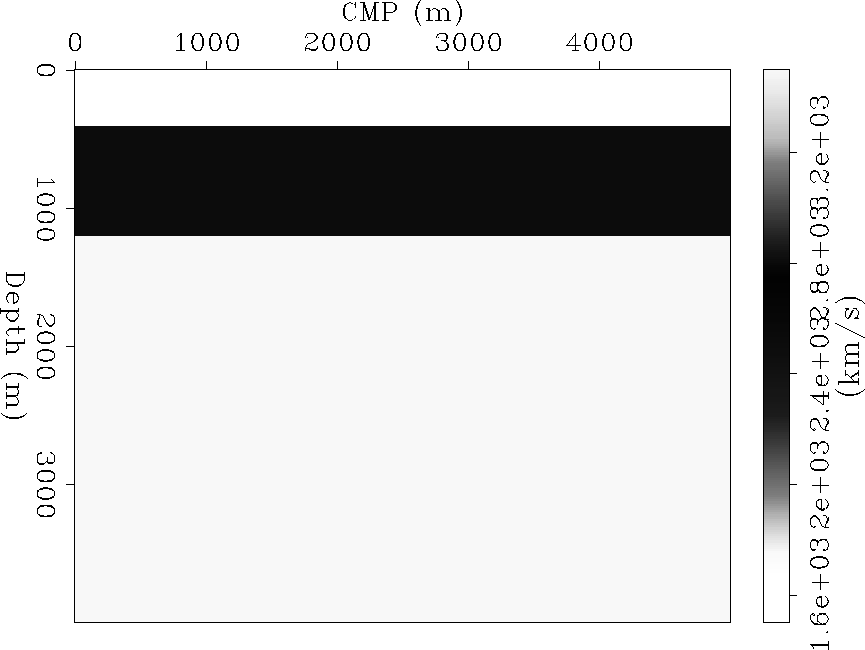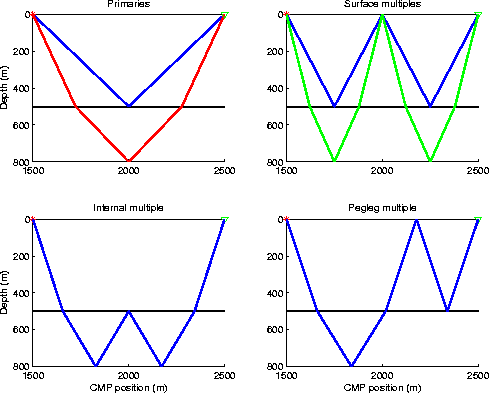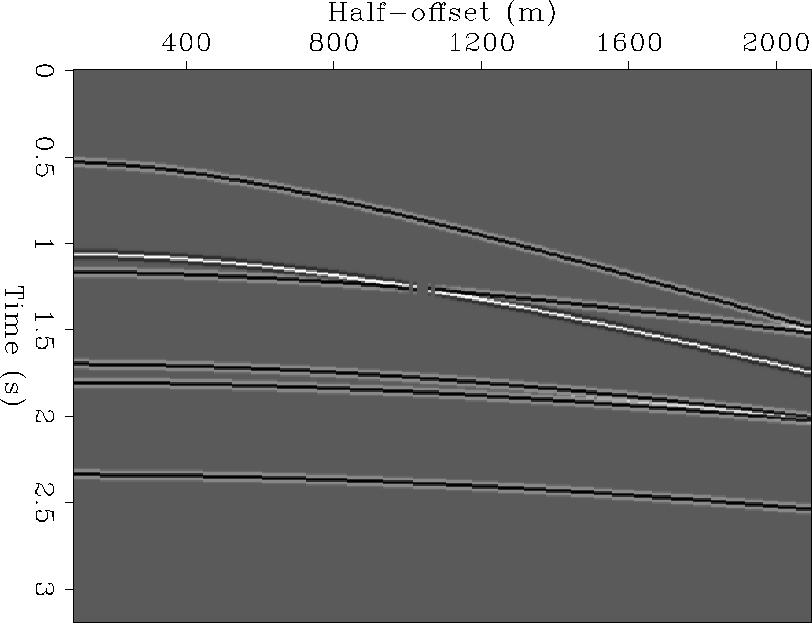|
vel_model
Figure 1 Velocity model for the synthetic dataset. |  |
![[*]](http://sepwww.stanford.edu/latex2html/cross_ref_motif.gif) . The top layer represents the water layer and the
other two represent the sediments.
. The top layer represents the water layer and the
other two represent the sediments.
|
vel_model
Figure 1 Velocity model for the synthetic dataset. |  |
 |
|
cmp
Figure 3 Common Midpoint gather showing the primaries (shallow two reflections) and the multiples. |  |
With this velocity model I analytically computed the traveltimes of the
two primaries and three multiples whose raypaths are shown in
Figure ![[*]](http://sepwww.stanford.edu/latex2html/cross_ref_motif.gif) . Figure
. Figure ![[*]](http://sepwww.stanford.edu/latex2html/cross_ref_motif.gif) shows a CMP gather with 100
offsets. The first and third events are the primaries and the other are
the multiples as evidenced by their reverse polarity. The second event
is the water-bottom multiple, the fourth event is the internal multiple, the
next one is the peg-leg multiple and the last one is the surface multiple
of the deeper reflector.
shows a CMP gather with 100
offsets. The first and third events are the primaries and the other are
the multiples as evidenced by their reverse polarity. The second event
is the water-bottom multiple, the fourth event is the internal multiple, the
next one is the peg-leg multiple and the last one is the surface multiple
of the deeper reflector.